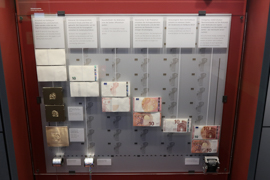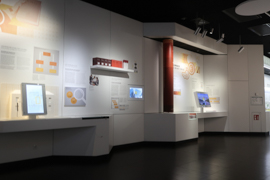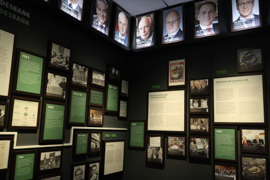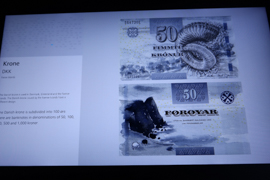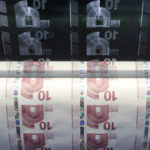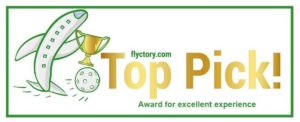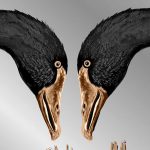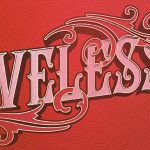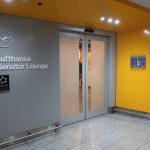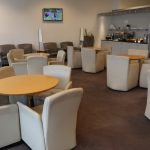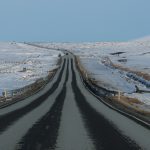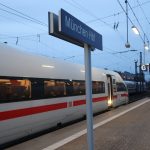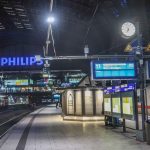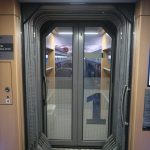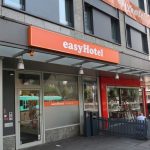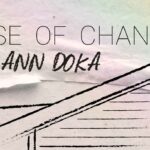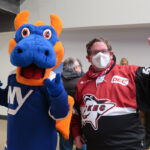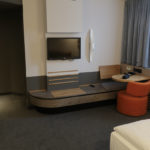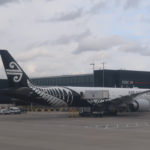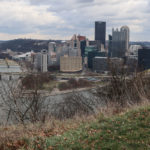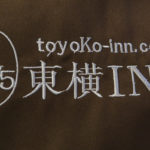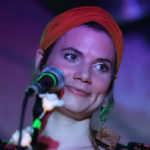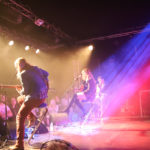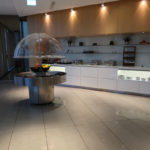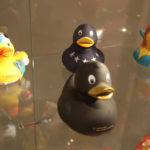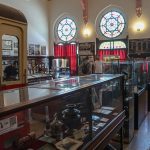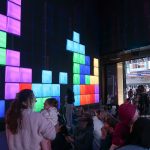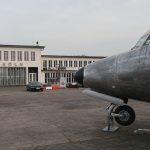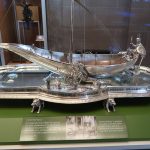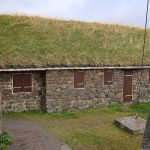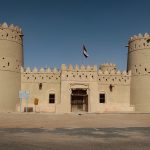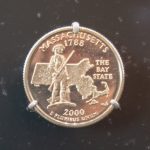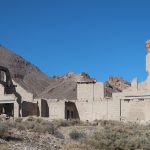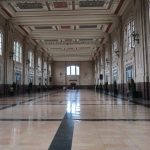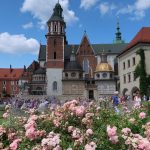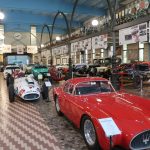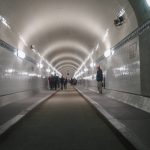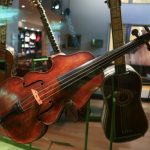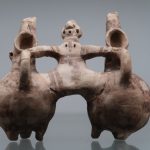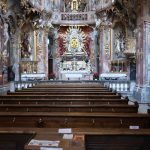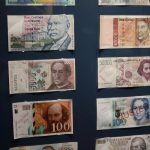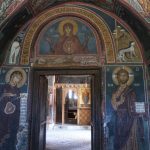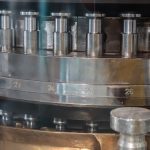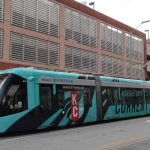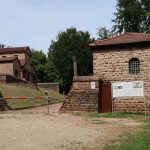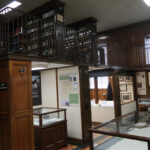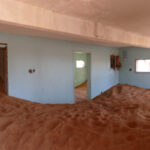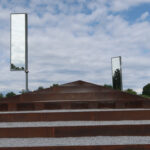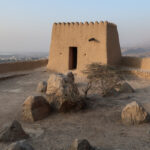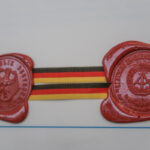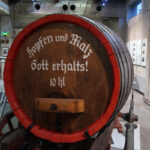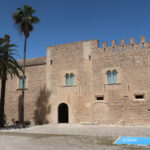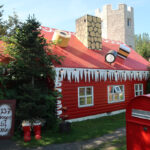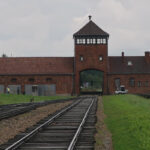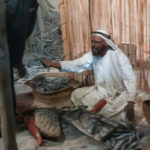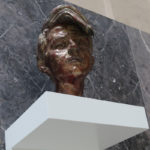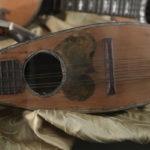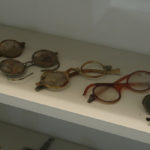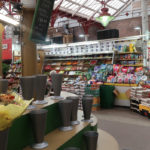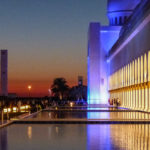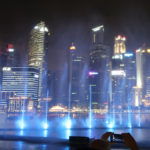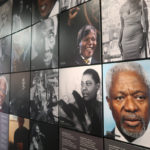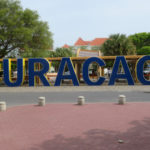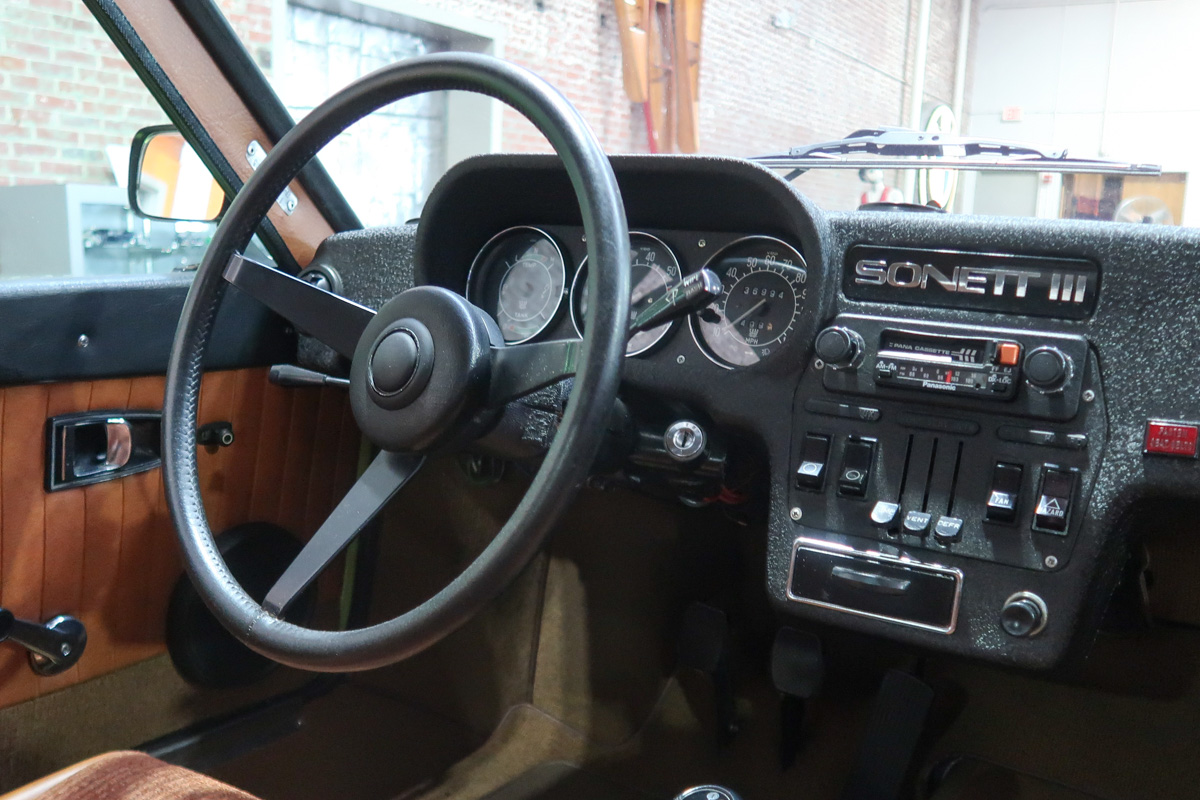Geldmuseum der Deutschen Bundestag
free entry
Flyctory.com Pros
- Very well structured exhibition about money and economy
- Very interactive display, which works well for kids and adults
- Good European and Global overview
- Free entry
Frankfurt is the banking capital in Germany and one of the key financial centers of all Europe.Thus, it may not be that surprising that Frankfurt is also featuring a museum about the heart of many economic deals: money. Driven by the German Central Bank (Deutsche Bundesbank) in their headquarters, they offer free access to their Money Museum (Geldmuseum).
The Money Museum is my Best Free Entry Attraction during 2020.

Central Bank Money Museum – Location
The headquarters of the German Bundesbank are located North of Frankfurt city center. The easiest way to reach the museum is by car, as it is not too far away from the A66 autobahn / motorway. By public transport, you take the underground train to Dornbusch, which is served by four lines, U1, U2, U3 and U8. None of these lines, however, are connected to the main station directly – you either have to walk from there to Hauptwache or Willy-Brandt-Platz or do the transfer by tram or S-Bahn commuter train. From Dornbusch, you either take a some ten minute walk or use a public bus.
The entrance to the museum is free. The standard opening times are 9:00 to 17:00 hrs daily, except Saturdays. The museum is having a separate entrance left of the building, which you easily see.




Central Bank Money Museum – The Visit
The museum is located on one floor, you have to walk some stairs up and down to reach the museum, but there is technical equipment to guarantee barrier-free access. The museum is completely documented in German and English. After some introduction on the importance of money and where finance is having an impact, the first section is dealing with cash. The Euro currency is obviously in focus. You do not only learn about the different national versions of the Euro, but also how to identify false money and how the European Central Bank and its partners is improving the features of coins and bank notes in order to avoid this kind of fraud.











The sections of the museums are made up very interactive, so that it is also an interesting place for younger visitors. Unfortunately, the Money Museum of the German Central Bank does not seem to be super-popular, so that there were no issues in regards of distancing or hygienic measures. The second section of the museum visit is about book money. Yoi learn how banks are working, about cashless payments and other topics related to it. One of the biggest sections is monetary policy, which is likely also the most complex topic displayed in this place.
On the one hand, you learn about metrics of economy like inflation and how you measure them – on the other hand, how you can manage economics and a currency to influence the economic behavior. Again, the museum is not just a place for experts, but is explaining the topic very well.












After you entered some sort of small “Hall of Fame”, which introduces the leaders of the German Bundesbank and its history, the last section is about global money. My most popular part of this section was to learn about all the different currencies in the world and how the notes and coins look like. A very remarkable experience is to touch and be able to lift a real bar of gold – it is also quite impressive how heavy it is.










Money Cabinet, The Language of Money, Cinema
The main path of the exhibition is made up like a large circular route, In the interior of this circle, there are three “side exhibitions”, which are quite impressive as such. The first section, the Money Cabinet (Geldkabinett) is vast collection of historic money. The presentation is really nice (hard to catch in pictures), so that you can enlarge the coins and learn about their history. Again, you have a lot of interactive exhibits and screens.







A bit minor compared to the Money Cabinet is The Language of Money, which deals like very important clans and families influencing the history of economics and money, e.g. the Medici. A very interesting way to look to the history of money as well – and also what has been done to preserve economic power.



Last, but not least, the museum hosts a quite large 360 degrees cinema, where you can watch short, educative movies of your choice about money. Very well done as well and also, a nice way to get into the topic.




Central Bank Money Museum – Service
The museum also hosts a cafe, which looks quite beautiful. During Covid-19 times, however, the place seems to be closed. The staff of the museum was very friendly and helpful.


Central Bank Money Museum – My View
The Geldmuseum is indeed one of these hidden gems you might simply tend to miss when you visit Frankfurt. It is made in a really nice and informative way with modern display methods. I feel it is a good place for comparably young people as well as for adults, you need some reminder of their knowledge about economy. The German Central Bank Money Museum is definitely worth the Top Pick! award.
Flyctory.com in Frankfurt
Here are all postings related to Frankfurt:

This time, my Friday also include an an album, which has in fact already been released. I featured Jetlagged already ...

Coming back from a trip to Krakow, I more or less immediately ran into the new releases as of 28th ...

This week, Rock of Ages is in town. I am attending all six shows of the musical in Cologne. This limits ...

Right after I traveled to the handball matches between the Netherlands and the Faroe Islands (match in Torshavn / match ...

I recently forgot a name of a German country artist and had to google it. I started typically by looking ...

I typically prefer Hilton Hotels and my second-most flown airport so far is Frankfurt Airport (FRA). Thus, it feels quite ...

After I skipped last week's Songs of the Week (and merge the three songs I had for it into this post), ...

The German artist Alless. (with a dot at the end) already had a major social media success this year. The ...

Happy Thanksgiving (especially to my North American followers)! While the North American music market is currently rather concentrating on Black ...

I had a very tough business trip to Paris this week. Nonetheless, I somehow managed to compile this list of ...

Another year, another time for Rock of Ages. Similar to the previous years, I disclose some of the international dates I ...

I feature athletics events three weeks in a row before I head to Newport in Rhode Island for tennis coverage ...

Snow in April! After I had some snowfall after the Swiss Floorball Superfinals (my coverage of the women's match / ...

That's all? That's roughly I thought when I finally had a rather short long list of candidates for my Songs of ...

Right the day after the Sound of Nashville show in Cologne on 5th March 2024, I headed to Frankfurt. Again, ...

As I knew it would be rather late after I visited the TSV Erlensee Floorball Bundesliga home matches vs. Dümptener ...

Having dinner with some frequent traveler friends in Frankfurt lead to a one night stay in the German city, famous ...

January 2024 has already passed and we are running into the first February 2024 edition of my weekly release radar ...

While I still had a rather short list of album releases, there was already quite a lot of stuff for ...

Typically when I fly from the B Gates at Frankfurt Airport (FRA), I love opting for the Air Canada Maple ...

As I typically prefer Hilton Hotels, the situation at Frankfurt Airport (FRA) is rather comfortable to me. With the Hilton ...

Having a cheap hotel close to the main station after the Kelvin Jones concert in October 2023. My aim, when ...

After I had the opportunity to see Kelvin Jones at the Heart To Heart show in Dusseldorf and the preparing ...

The first day of our Iceland Ring Road trip brought my wife and I to the Air France / KLM ...

NH Hotels are rolling out a new brand of hotels in Europe: nhow (pronounced as "now") is a group of ...

With this fourth posting, I am closing my coverage of the German Athletics Nationals 2023. The Auestadion in Kassel hosted ...

I start my coverage of the second day of the German Athletics Nationals 2023 in Kassel with the field events ...

I am a huge fan of the field events in athletics - and thus, I am really glad to also ...

Some surprise in this week's posting: I selected a very special instrumental track to lead my Songs of the Week ...

My first full festival coverage with Flyctory.com - I was really nervous while sitting on the train to Stuttgart and ...

Traveling out of nowehere: I compiled this set of songs in Swansea in Whales, watching the very last Rock of ...

Let's take you on a trip to Iceland. This is the first proper entry to my Trip Report, which takes on ...

Attending a frequent traveler meeting nearby, I had the opportunity to visit the Hampton by Hilton Frankfurt Airport towards the ...

Damn, it is already four years... And it is more than 2,750 postings since then. On 25th February 2018, I ...

Ireland, the United Kingdom, Belgium, the Netherlands, USA, Canada - and of course Germany lay ahead of me for the ...

This weekend was really difficult for me to plan ahead. With the ISTAF Indoor in Dusseldorf, I had a fixed ...

Oh wow, I really have to limit myself this week. There is so much good music being released this week ...

AIthough has just been a day trip, but I just felt it is too long to tell the story of ...

Okay, I give in: this trip is weird. While people typically feel that I am "just" a die hard aviation ...

Even though one of my early Flyctory.com posts was about my B777 Singapore Airlines First Class experience, it took me ...

Dud you ever feel like learning more about the current operations and future plans of Germany's largest airport? Frankfurt Airport ...

A trip to a Frequent Flyer meeting lead to a post about train rides: Less than two weeks after the ...

I was quite surprised that finally 15 songs made it into my Songs of the Week as of 16th November 2022 ...

Unexpected encounter in October 2022: right when I was about to have my first Eurowings Discover intercontinental flight to Tampa ...

After I gave you an overview of 2022 European appearances of my favorite musical Rock of Ages, I felt to ...

I typically just select the song, which is leading my Songs of the Week. This week, my favorites of the week ...

Going to Frankfurt by rail after work, watching a concert there and taking an early morning train back to Cologne, ...

Wow... This edition of my Songs of the Week was a huge bit of work. I simply had so many candidates for ...

I was quite amazed that not only Christmas, but also Easter feels to have an impact on the volume of ...

Oh, I feel that the Songs Of The Week are really a tradition on Flyctory.com now. More than three months since I ...

House of Change by Ann Doka has indeed bin one of the German artist albums I have been looking forward to ...

After Day 9 featured the last real travel highlights including the Opry show, the last entry of any multi-day trip ...

Time to see my hockey team again! The first day of my Pittsburgh Penguins trip to the States did not ...

Synthi pop with an Eurodance / 1980's touch? If there is press kit information like this, there is always a ...

Lauryn Mark is about to release her second album in the middle of 2022. As an intermediate step, she is ...

Even though I do have a couple of airport reviews on Flyctory.com, I so far missed a lot of the ...

"Blues rock with a Texan touch" - that's how the press kit to their second album Time For Decisions is describing ...

Due to rail strikes, I had to re-plan my whole trip to Frankfurt Airport before heading to Canada. I finally ...

For my trip to Canada on the day they re-opened their borders after Covid-19 restrictions I went for Condor. I ...

Apart from several stays around the terminals, Frankfurt Airport nowadays features four airport hotels with direct walk-in connection to Terminal ...

During the later phases of the Covid-19 lock-downs in Germany, I had the idea to that posting. Maybe just because ...

For years, if I would have wanted to deeply bash the Deutsche Bahn (German Rails), there would have been a simple way ...

Music by a German artist with Armenian roots - I am always curious when it comes to have a listen ...

The German Movie Museum - or: Deutsches Filmmuseum is located in the heart of Frankfurt (Main). It gives you an overview about ...

Covid-19 has influenced our lifestyle in a historic way, indeed. A lot of things we did love to do are ...

Zeppelinheim - the nominal reference in the name of the borough South of Frankfurt to the legendary German airships is ...

I am always happy to chat with German artists on my blog in the Spotlight interview category. Ann Doka is ...

After praising my favorite songs of 2020 and the favorite albums and EPs in 2020, the final posting to do ...

I had a couple of overnights in Frankfurt during 2020, some of them motivated by rail trip connections. In October ...

Even though architecture is a topic which so much influences our everyday life, the German Architecture Museum (Deutsches Architekturmuseum - ...

Due to the early departure of an ECE 451 ride from Frankfurt to Milan in September 2020, I looked for ...

Just ten days before she is releasing her debut album Desert Diamond, I introduced you to the promising German country music ...

I just stayed on the smaller Court 1 after Divij Sharan's 1st round match at the bett1HULKS Indoors in Cologne ...

When you look at European country music, you very often purely focus on British artists. However, the German country music ...

Right before I departed in Frankfurt on day 1 of my Four Countries, Four Trains trip in summer 2020, I ...

One thousand kilometres to the sea - or vice versa One thousand kilometres to the Alps - was the slogan a new private ...

Also due to the current situation in aviation, I could follow my idea to invest more time in rail travel ...

So excited to travel again and do a proper. I did my first day of the rail rides through Germany, ...

Apart from some hiking and a number of drive-in cinemas, I did not generate any new contents for Flyctory.com on ...

Four ice hockey matches, Rock of Ages #32 in Hollywood, two new airlines and many more impressions - this trip ...

Time for some discussions in the German music scene - the Böhse Onkelz released their 17th studio album on 28th ...

Day 1 of my trip to the Penguins. The travel days to the US are typically not too thrilling. Leaving ...

While I so far made an semi-annual look back in time, the "Very Important Postings", I decided something with my ...

As an overnight stay after the Mrs Greenbird concert in Frankfurt, I decided to opt for a hotel chain, which ...

One of the few German country/folk acts, which gained some international reputation in the past is Cologne-based Mrs. Greenbird. Before ...

Right after I returned from a vacation trip to Tenerife, I headed from Frankfurt Airport to Das Bett (literally: The Bed), a Frankfurt ...

After I mentioned the Air Canada Lounge at Frankfurt Airport already in my love letter posting to LATAM flight 705, ...

My trip to Singapore and Malaysia was my debut First Class experience (apart from Domestic First in the USA). I ...

For customers flying on Lufthansa's top notch First Class product (and HON Circle Members), the German airline offers a very ...

The Lufthansa Lounges for Senators and Business Class customers are tending to be too crowded, especially in peak times. Thus, ...

If you collect and something, you likely also have one or more several favourite pieces in your collection. What do ...
No Admission Places
Great sightseeing and experiences do not necessarily have to cost a fortune – here are all my Free Entry postings:

During my May 2025 trip to Istanbul, I did not do too much sightseeing. Quite a lot of stress at ...

Immersive arts exhibitions are becoming more and more popular. I introduced you to the ARTE Museum in Dubai or the ...

The 2025 Rock of Ages shows in Cologne (I visited all of them...) gave me the opportunity to have a closer ...

One of the most iconic buildings in the Faroese capital Torshavn is indeed the Torshavn Cathedral. Named Havnar Kirkja ("Harbor ...

Some 2,000 years ago, the Romans controlled a wider range of Europe. They even made it to (nowadays) Luxemborurg. One ...

Walking along the White House is one of these must-do things when you are in Washington. There are even tours ...

The Faroese people call Skansin (liternally: the "redoubt") the most peaceful fort on Earth. In fact, the facility built in 1580 in ...

On my multi-stop drip from Germany to Jakarta in Indonesia, I had one free day on the outbound leg in ...

My April 2024 Pittsburgh Penguins trip brought me back to Washington D.C.. I decided to add visit some places, which ...

When it comes to spectacular views over Paris, you typically think of Tour Montparnasse or the Eiffel Tower. However, the ...

The Malaysian capital Kuala Lumpur has deeply won my heart. I really loved being in the country during my two ...

The flora of the Faroe Islands is rather unique and special. A nice way to explore it is the Faroese ...

The Wiener Zentralfriedhof (Vienna Central Cemetery) is the one of the largest cemeteries in Europe. With over 300,000 graves and three million ...

While I already took you to some key attractions of Kansas City, the local Money Museum is likely not on ...

Going back from Las Vegas to Los Angeles after the New Year's Eve celebrations, my wife and I opted to ...

For the second part of my "review battle" of museums dealing with visions around the future, we leave the Museum ...

Honestly, when my wife and I visited the Count's Kustoms Showroom in Las Vegas, we just had very little knowledge ...

According to Wikipedia, twelve different railroad lines overall operated from and through Kansas City overall. However, the golden age of ...

The Old Market Hall (Vanha Kauppahalli or - in Swedish - Helsingfors Gamla Saluhall) is one of the most iconic ...

The Wawel Royal Castle is likely the most iconic piece of architecture in Krakow. The castle is located above the ...

Puffins are one of my favorite animals. Thus, being able to say hello to them in wildlife conditions is always ...

Kourion Archaeological Park has definitely been one of the highlights of my trip to Cyprus in October 2023. However, this ...

Visiting Dortmund, my wife and I also headed to the Naturmuseum (Nature Museum) in the city of the German Ruhrgebiet. After the ...

When you pass North Huntingdon Southeast of Pittsburgh on the US-30, it feels like a very typical American city at ...

During my most recent trip to the Emilia Romagna, I also visited the Umberto Panini Collection Motor Museum. Yeah, it ...

If you nowadays look at the map of Cyprus, you won't find any rail-driven vehicles. However, the country did have ...

Without a doubt, the Alter Elbtunnel / Historic Elbe Tunnel is one of the most iconic constructions in the Northern German ...

The area around Prince Consort Road in South Kensington, London, is a treat for music lovers. It hosts one of the key ...

While I so far introduced you to parts of modern life in Cyprus, the Mediterranen island is full of history ...

Even though people typically think that I am an aviation nerd "only", I am in general very interested in any ...

Asam Church in Munich is regarded to be the most beautiful church in the Bavarian capital. Thus, on one of ...

Nashville is Music City (not only for country music...). However, with the Predators, the Titans and nowadays also Nashville SC, ...

My trip in May 2022 (driven by the Ice Hockey World Championships 2022 in town) gave my wife and me ...

I typically try to avoid rating active religious places like churches, mosques or temples. However, the Cypriot orthodox church of ...

I love unique places, weird locations - and even mark them by the Flyctory Obscura tag - The more I ...

While I visited Kansas City in summer 2022, I have been quite amazed that the US-American city drives its own ...

Even though the Belgian border is less than an hour drive away from where I live, there are not too ...

While Dubai and Abu Dhabi already attract masses of tourists, the North and East of the United Arab Emirates is ...

The area around Trier is holding a bunch of records for the oldest buildings and structures in Germany. The rationale ...

During the Nazi regency in Germany, the Emslandlager (Emsland Camps) was a group of concentration and detention camps in the Emsland region, ...

One of the most unique experiences I did during the last months was definitely visiting the Tennessee State Capitol. On ...

At least for North American, St. Louis is some sort of unofficial capital for a very special sports: chess. The ...

Akureyrarkirkja or simply the Akureyri Church is one of the key eyecatchers of the Northern Icelandic city. The Lutheran church, ...

As some of my plans during my stay at Vestmannaeyjar did not work out as expected, I had time to ...

Even though the TV series The Dukes of Hazzard just has been aired in the United States between 1979 and 1985, ...

A museum about Law and Justice sounds not really like the most thrilling place out there. However, during the sixth ...

The abandoned settlement part of Al Madam in the East parts of the Emirate of Sharjah has become a hidden ...

I have to agree: if it comes to arts, especially modern arts, I am a real low-brow. You won't find ...

My trip to the United Arab Emirates in February 2022 majorly lead me to the Northern part of the country ...

Germany between World War II. - this is roughly the mission of the House of the History of the Federal ...

Apart from regional local soccer dominator Borussia and the coal production history, Dortmund is quite well famous for a very ...

You might not make it to the Mallorca city of Manacor just to visit their history museum - but the ...

The Gloster Aircraft Company (the original name has been Gloucestershire Aircraft Company) has been active from 1917 to 1961. The most ...

The Tränenpalast ("Palace of Tears") in Berlin is the former border crossing point between East and West Berlin. It is located at ...

Hverir is one of the most popular geothermal areas in Northern Iceland. Two the key drivers is obviously that it ...

We all know that Santa Claus is living in Rovaniemi, Finland... Or is he home to Russia? Northern Canada? There ...

The same faith which applies to Oswiecim in Poland (better known under the former German name Auschwitz) is also valid, ...

Auschwitz is a town's name (adopted to German) which you typically link with murder, cruelty, state-organized mass killings, injustice. A ...

Professional stargazing: The European Southern Observatory, short ESO is a collaboration of multiple European countries to gather astronomic forces on the ...

Abu Dhabi Khalifa Park is one of those hidden gems which you typically don't find in travel guides (or at ...

Before the pandemic limitations, One New Change Mall in London has been a really popular place. First of all, it ...

The Weiße Rose / "White Rose" was a resistance group during the German Nazi regime. Mainly consisting of university students, she ...

Venice is not only the city of vaporetto rides, Murano glass and the doges - it also has quite a ...

Especially in the recent past, I read a couple of ridiculous comparisons between certain people and political groups (which I ...

A view over London from a skyscraper for free, located in a beautiful garden-alike area - and all this even ...

Hangar 7 at Salzburg Airport, driven by (likely) the world leader of energy drinks, is a quite popular and well ...

When you think about Nazi Germany murders, you typically think of extermination camps like Auschwitz or the concentrations camps. A ...

The Mithraeum in London is maybe one of the hidden gems of the British capital. During exvacation works in London ...

When people think about the United Arab Emirates, they typically think of Dubai or Abu Dhabi. During my last trips, ...

One thing I especially loved about Jersey's capital St. Helier are the two markets in the center of the city ...

The Smithsonian's are just a tourist's (and likely also a resident's) best friend when visiting Washington DC. The US capital ...

I am not too much of a casino person. However, I love being in Las Vegas as it is also ...

Though being just right opposite the Sheikh Zayed Grand Mosque, most Abu Dhabi vistors will likely not make it to ...

If you visit Singapore Chinatown, the Buddha Tooth Relic Temple will definitely be one of the eye catchers. The huge ...

The climate discussions during the last months again boosted discussions whether local traffic could not be for free to reduce ...

Name the Emirates Palace, think Yas Island with Ferrari World or be historic and say it's the Louvre Abu Dhabi ...

Even during my December 2019 stay in Pittsburgh, I frequently did get in touch with Christmas. There were not just ...

After reviewing four Christmas markets in Cologne recently, I did not expect to get in touch with any additional ones ...

A place about city development and planning? Does not sound to be the most thrilling spot on Earth, but in ...

The Christmas Market in Cologne's Old Town is the largest of the city. Under the slogan "Heinzel's Wintermärchen" (something like Good ...

The Stadtgarten in Cologne is both, a recreational park in the heart of the city, whose facilities are protected, and ...

When I was preparing for my November 2019 trip to the Emirates, I ran into a review of a roundabout ...

Cologne Cathedral and a 25 meter high Christmas tree - these are the key ingredients, which turn the Christmas Market ...

During each festive season, Cologne is crowded with tourists and visitors due to its Christmas markets. There are masses of ...

In order to take the trip to the very Western point of Tenerife on your own, you have to get ...

One amazing feature of Washington D.C. is the massive number of museums driven by the Smithsonian Institution: they are typically ...

Water towers are not too common in Central Europe, especially in Germany. This is definitely one of the key factor, ...

During my March 2019 stay in Oxford, I also had the chance to explore at least some sights of the ...

On my very final stage on the road to the 2019 CMA Fest in Nashville, visiting the West Tennessee Heritage ...

On the last evening of my business trip to Singapore, I chose a lovely Thai restaurant, Sabai, for dinner. After ...

The historic Cental Fire Station is one of the most iconic landmarks in Singapore. While you likely pass by this ...

Just around all the National Historic sites in Philadelphia, there is a load of additional museums, which are more or ...

If you use the Madrid Metro Line 1 between Bilbao and Iglesia, you will likely notice that you pass another ...

Singapore's Marina Bay is known as one of the poshest destination in the city state - not just because of ...

Wuppertal in the Bergisches Land region Northeast of Cologne hosts a very special attraction for train and rail enthusiasts: the ...

Oxford is full of amazing collections. Many of them are driven by University institutes. This leads to two key advantages: ...

Watching Mike & the Mechanics in the lovely City Hall was the event which made me travel to Sheffield. The city ...

Motorway service plazas are the most boring places in the world? Not if you are in the United Arab Emirates, ...

Just some three years after the complex opened in 2015, the former "I-Drive 360" district next to Orlando International Drive ...

Something we all have in common is that we went to school - at least for a certain time. The ...

If you think about shopping malls in Dubai, you first think about the Dubai Mall or the Mall of the ...

Liverpool has been one of the most important European cities for slavery trade. Thus, I used my September visit at ...

While I have to admit that I did not like Davis Cup tie host city Kraljevo too much, there are ...

Located North of Cologne, the "Wildpark Tannenbusch" offers a nice way to spent your free time with your family, enjoying ...

The island's capital is definitely a must-visit when you are on Curacao: here are some impressions and a review of ...

As part of my summer vacation, I spent some 24 hours in Niagara Falls, ON (means: on the Canadian side) ...

Spa Town Bad Münstereifel, suffering from economic problems in their city center, decided to revamp its commercial concept and opened ...

There have been so many discussions about Rio 2016. Not just about whether the country itself is able to stand ...













